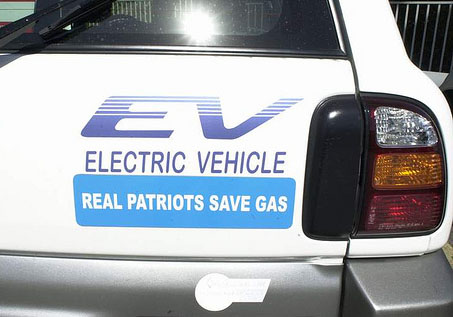The US Environmental Protection Agency (EPA) administers a Worker Protection Standard (WPS) designed to protect workers exposed to agricultural pesticides. WPS is patterned after the Occupational Safety and Health Administration (OSHA's) Hazard Communication Standard (HCS) for workers in most other industrial and commercial settings. EPA adopted the WPS in 1992, and just adopted its first revisions late in September 2015. Some of these changes incorporate revisions to HCS adopted by OSHA in 2012 (see here), while others catch up on two decades of industrial hygiene and worker safety practices. The revisions will appear in the Federal Register (probably in November) and become effective 60 days later. Compliance deadlines extend for up to 2 years for the various changes.
What Does WPS Require Now?
I summarized longstanding WPS requirements when I blogged last year about EPA’s proposed revisions (click here ). To further summarize my summary, WPS requires employers whose employees work with or around pesticides to provide the following:
-
Pesticide safety training
-
Labeling information
-
Specific information including pesticide-specific training within 5 days after beginning work (“grace period”), supplementing immediate emergency information and a pesticide safety poster
-
Requirements to keep workers out of areas being treated with pesticides, within nurseries and greenhouses (“buffer”)
-
Requirements to keep workers out of areas during a restricted-entry interval (REI) set for each pesticide
-
Protect early-entry workers doing permitted tasks in pesticide-treated areas during an REI, including special instructions and personal protective equipment (PPE)
-
Required warning to nearby workers about pesticide-treated areas (oral and/or warning signs, depending on the chemical)
-
Monitor handlers using highly toxic pesticides, at least every 2 hours
-
Provide required PPE to handlers (e.g., clothing, respirators)
-
Provide decontamination supplies
-
Provide for emergency assistance.
Some requirements apply on behalf of all agricultural workers who may be exposed, plus additional requirements for pesticide handlers who work with regulated pesticides.
What Changes is EPA Adopting?
EPA has adopted a wide variety of revisions, including provisions that have changed significantly from last year’s proposal. Revisions include:
Read More
Tags:
Employer Best Practices,
Health & Safety,
Employee Rights,
Environmental risks,
Environmental,
EPA
The U.S. Environmental Protection Agency (EPA) administers rules governing the import and export of hazardous waste regulated by the Resource Conservation and Recovery Act (RCRA). These rules implement requirements established by RCRA, and also ensure that the U.S. meets its international responsibilities as a member of the Organization for Economic Cooperation and Development (OECD) by creating national rules that meet agreed-upon OECD standards. The proposal should appear in the Federal Register soon, opening a 60 day comment period after which EPA will decide whether to finalize the changes.
Read More
Tags:
Health & Safety,
Environmental risks,
Environmental,
EPA,
Hazcom,
RCRA,
Canadian
In recent years, VW officials have sometimes been quoted touting their “clean diesel” vehicles by paraphrasing one of their competitors—“this isn’t your grandfather’s diesel.” This month VW finally admitted to the U.S. Environmental Protection Agency (EPA) and customers worldwide that it “isn’t your regulator’s diesel” either. The company had programmed the electronics in millions of vehicles to provide false data during required emissions tests.
Read More
Tags:
Health & Safety,
Environmental risks,
Environmental,
EHS,
EPA,
Hazcom,
CAA,
Transportation
Although Environmental Health and Safety (EH&S) requirements target hundreds of micro-organisms (primarily viruses and bacteria), regulation of important hazards remain on the drawing boards, awaiting appropriate testing and control methodologies, sufficient resources … and high enough political priorities. Until recently, one of these unregulated pathogens has been the legionella bacterium, first identified in 1976 as the cause of “Legionnaire’s disease” – named after an outbreak at an American Legion convention in Philadelphia traced to the hotel’s air conditioning system. This summer, however, an outbreak in New York has led state and local health agencies to adopt extremely ambitious testing and disinfection programs.
Read More
Tags:
Employer Best Practices,
Health & Safety,
Employee Rights,
Environmental risks,
Environmental,
EHS,
EPA
Late in June the U.S. Supreme Court issued its latest ruling on the Environmental Protection Agency (EPA) efforts to implement the Clean Air Act (CAA). This time a sharply divided Court voted 5 to 4 to vacate EPA’s attempt to regulate hazardous air pollutant (HAP) emissions from fossil fuel-fired electricity power plants. The justices split over when during a decade-spanning, multi-phase rulemaking did CAA require EPA to calculate the costs and benefits of regulation—the Court majority ruled that this calculation should have occurred in the first round, rejecting EPA’s decision to do so later in the rulemaking sequence.
Read More
Tags:
Environmental risks,
Environmental,
EPA,
Hazcom,
Oil & Gas
It’s been more than 30 years since the U.S. Congress enacted national underground storage tank (UST) requirements (federal UST Law) in 1984. The Environmental Protection Agency (EPA) published extensive UST regulations in 1988, establishing technical requirements for the following:
Read More
Tags:
Environmental risks,
Environmental,
EPA,
Underground Storage Tanks,
Hazcom
Did you know that “what you drive, how you drive, and what fuel you use can impact both the environment and your pocketbook?” The U.S. Environmental Protection Agency (EPA) has put together a Green Vehicle Guide website that provides useful information and answers to all your questions about how you can go green on the road and save money too.
Read More
Tags:
Health & Safety,
California Legislation,
Training,
Environmental risks,
Environmental,
EPA,
Hazcom,
Transportation

The federal Clean Water Act (CWA) and state water quality laws (including California’s Porter-Cologne Water Quality Control Act) govern activities that may affect “waters of the United States.” Routine discharges from industrial and public sources make up most potentially polluting discharges, and are subject to National Pollutant Discharge Elimination System (NPDES) permits and California Waste Discharge Requirements (WDRs), but additional requirements also apply to potential “storm water” runoff from rainwater and snow, which can entrain oils and other pollutants and wash them down storm drains into water bodies. The US Environmental Protection Agency (EPA) established the first broad-based national program in 1990, and has revised and expanded requirements over the past quarter century (often in response to court decisions finding its efforts inadequate). States have followed suit. For example, in 2014 California updated its industrial storm water requirements, replacing a general permit adopted in 1997 with a new one that becomes effective on July 1, 2015. The new permit revises and expands requirements, including narrowing exemptions for “light industry” facilities to become conditional exemptions subject to certification requirements, and addition of detailed requirements for “preproduction plastic” materials. The remainder of this note summarizes the new California requirements, which generally are comparable to EPA’s national general permit (last updated in 2008)–so readers outside California should remember that your facilities face analogous responsibilities.
Read More
Tags:
Health & Safety,
California Legislation,
Environmental risks,
Environmental,
EPA,
Hazcom
What is “green infrastructure”? Green infrastructure incorporates vegetation, soils, and natural processes to manage water and create healthier urban environments. When talking about an area the size of an entire city or county, green infrastructure refers to an assorted collection of natural areas that provide habitat, flood protection, cleaner air, and cleaner water. When referring to an individual neighborhood or smaller locale, green infrastructure refers to stormwater management systems that simulate nature by soaking up and storing water, which then can be redirected back into sustainable usage by those communities.
Read More
Tags:
Health & Safety,
Environmental risks,
Environmental,
EPA,
Transportation,
Stormwater
The Occupational Safety and Health Administration (OSHA) adopted massive changes to its Hazard Communication Standard (HCS or Hazcom) effective May 25, 2012, updating chemical information, labeling and training requirements that had been in place since the 1980s. These revised requirements conform U.S. requirements to international guidelines under the U.N.-sponsored Globally Harmonized System of Classification and Labeling of Chemicals (GHS). Recognizing the extent of these changes, OSHA provided multi-year compliance phase-ins for employers whose workers manufacture, distribute or use chemicals. The next such deadline is June 1, 2015, when Safety Data Sheets (SDSs) must replace Material Safety Data Sheets (MSDSs) and end-user employers must ensure that their Hazcom programs reflect most of the revised requirements.
Read More
Tags:
SDS,
Health & Safety,
OSHA,
Environmental,
EPA,
Hazcom


.jpg)







